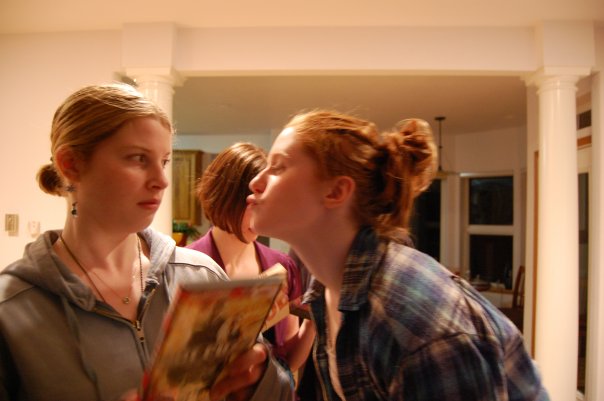Adult coloring books meant for de-stressing, stress me out. My name is Alexa Hinzman, I am the artistically challenged twin of the owner of this blog. I have never been one for creative hobbies or had the talent to develop one, but I will tell you of a passion of mine and the balance between work and play in my life and how I developed it.
This December (2017) I moved to Amsterdam as I accepted a position to start my PhD in hydrology. Between moving to a new country, and starting my program, my hobby has fallen to the wayside. However, in better days, I would read everything I could get my hands on. Right now, my Kindle has about 5000 books on it, with more than 17000 ebooks still on my computer. I am in two book clubs. I have joined 3 read-a-longs. I love books, I love the smell, the weight, the way they look. I have 5 sets of Harry Potter books, hardcover, softcover, audio, ebook and in Japanese. I can easily read a standard novel in a single day. My love of reading has always been with me since I first started to read. It is so easy to pick up a book and let it take you wherever it leads, especially if you do not want to be working or the alternative is a science paper that includes too many new definitions.
You don’t automatically start out as a killer graduate student. You are the small fish thrown into a big pond and all you can think is, ‘What have I gotten myself into?’. I had to battle with myself to not play when I had to work, and if I was to take a break, that it didn’t turn into a 1 or 2 or 3 hour interruption. Your projects look juvenile next to older graduate students, you do not really know how do your own research. But over time, it gets easier, and your projects start to look better. And you don’t spend the entire night before finishing a project that was supposed to have taken 2 months to create.
I have come to learn several bitter truths, just because you love to read words, does not mean you love to write them, and fiction writing is wholly different from science writing. How do you learn to write in science terms? Well first of all, no more contractions. If in doubt, define. All abbreviations require explanation, and never, never, never say: maybe, could or should.
There is nothing more I would like to do with my time then read, it’s an easy hobby that has been made easier with the invention of the ebook. No more do I have to lug around a large book, now I can use the same item that I use for writing emails on the go. Not only do I have one book, I can now carry my favorites, all while using my iPad for “work” It’s the perfect cover.
The thing about grad work is, it’s your own. If you work or not, that’s your choice. There is no stamped time when you come in and out. More often than not, what work you have done is a variation of something that is still not working because the stupid script which you have combed with a magnifying glass isn’t working. It’s frustrating, it’s annoying, and it leaves you with a headache.

Balancing play and work has always been difficult for me. But equilibrium is what needed to happen, and so it did. I loved my time as a Master’s student. I learn more in 2 years than in my entire undergraduate, and it was not in classes. I learned to work. I learned to write, I learned to do my work even when I was not motivated, even when I wanted nothing more than to curl up and pick a book to read. Every page, ever paragraph in my thesis was a struggle, but I got through. These are skill not easily acquired, but they are worth their weight in gold.
I have also grown as an adult, during my Master’s I moved out of my parent home and into an apartment. Suddenly I could eat cake 4 times a day, I could watch whatever I wanted and do whatever I please. This increase in freedom was a shock to the system that convinced me that it was truly time to adult. My hobby and work had to make way for cooking, cleaning the apartment and shopping for groceries.
As my priorities change, so did the importance of my time, I had to start time management and schedule time for sleep, work and play. I had gone to the gym regularly while in undergraduate, and had stopped during my masters. The gym was picked up again in my final year of my Master’s. I have found mental health is tied to physical health. Taking an hour I thought I could not spare and instead sweating at the gym allowed me to more focused and productive in less time. I stopped bringing my iPad to work. I downloaded an app (SelfControl) that would block websites that I would consider to be a time suck (Looking at you Facebook) for blocks of time.
Creating a schedule helps I have found, just as long as you stick to it. Cooking at home and clean eating also helped me with focusing and making me feel great during the day. Preparing food has given me a new appreciation for spices and the many ways you can cook chicken. My boyfriend was also there to cheer me on and drag me to the gym on the more difficult days.

Work and play is a simplification of life, there is work and there is play, but there is also sleep, family, friends, gym, date nights, dinners, chores, driving, emails, travelling, studying and much more. Every one of those things requires your attention, every person’s emphasis is different depending on what makes her or him happy.
Find what makes you happy, create a schedule, be kind to one another, spend less time on Facebook, forget about past transgressions and you are set for life.
From Megan: Attached is a link for Alexa’s science fair project she did on permafrost when we were around 10. I have included it because she looks so gosh darn adorable and she is currently studying permafrost so it feels destined.
http://ine.uaf.edu/werc/projects/permafrost/alexa2.htm






 Taxidermy is a two-step process of deconstruction, then reconstruction. After pulling the viscera from the body, flaying the muscles from the bones with a scalpel, and painstakingly cleaning and Borax-ing the thin skin of the carcass, the delicate work of construction began. Using the 1960s book for instruction, I created a new skeleton of wire and salvaged bones inside the skin. To re-create a life like rabbit, I re-fitted the empty skull with eyes from a stuffed animal and filled the body with excelsior before stitching it back together (partial credit for these feats go also to my committed mother and father). I realized during the process that I was not constrained by biology in my re-creation of a rabbit, and mounted wings from a bird in the freezer to its back. Apparently there’s a whole genre, rogue taxidermy, dedicated to subverting the natural form of mounted animals.
Taxidermy is a two-step process of deconstruction, then reconstruction. After pulling the viscera from the body, flaying the muscles from the bones with a scalpel, and painstakingly cleaning and Borax-ing the thin skin of the carcass, the delicate work of construction began. Using the 1960s book for instruction, I created a new skeleton of wire and salvaged bones inside the skin. To re-create a life like rabbit, I re-fitted the empty skull with eyes from a stuffed animal and filled the body with excelsior before stitching it back together (partial credit for these feats go also to my committed mother and father). I realized during the process that I was not constrained by biology in my re-creation of a rabbit, and mounted wings from a bird in the freezer to its back. Apparently there’s a whole genre, rogue taxidermy, dedicated to subverting the natural form of mounted animals.
 My first and last beaded sockeye salmon. I should have picked something easier. Photo courtesy of Natura Richardson.
My first and last beaded sockeye salmon. I should have picked something easier. Photo courtesy of Natura Richardson. A typical dog walk on a sunny day.
A typical dog walk on a sunny day. Our first year of gardening, we grew 50 pounds of potatoes.
Our first year of gardening, we grew 50 pounds of potatoes. Lucy in the winter.
Lucy in the winter. The ferry coming to the Auke Bay ferry terminal in on a calm, sunny day.
The ferry coming to the Auke Bay ferry terminal in on a calm, sunny day. Before (top) and after (bottom) picture of our half marathon accomplishment. Top picture from left to right is Doug, Elizabeth, myself, and Valentina. Photo courtesy of Valentina Melica.
Before (top) and after (bottom) picture of our half marathon accomplishment. Top picture from left to right is Doug, Elizabeth, myself, and Valentina. Photo courtesy of Valentina Melica. On a run in Juneau, Alaska. You can see Herbert glacier in the background. From left to right is Lucy (the dog), myself, Valentina, and Elizabeth.
On a run in Juneau, Alaska. You can see Herbert glacier in the background. From left to right is Lucy (the dog), myself, Valentina, and Elizabeth. Lucy on a typical winter dog walk. Hope this encourages you to embrace your activities with passion and delight. Lucy certainly does.
Lucy on a typical winter dog walk. Hope this encourages you to embrace your activities with passion and delight. Lucy certainly does.